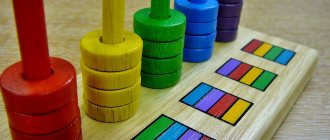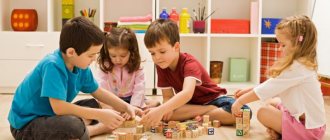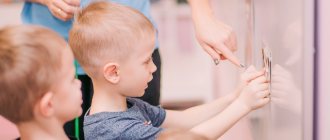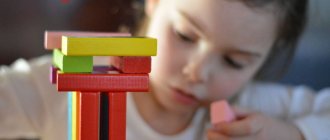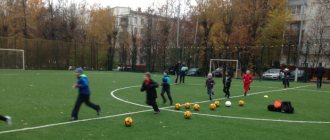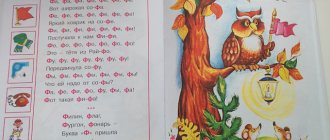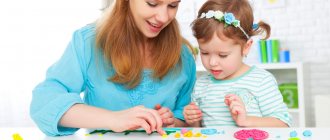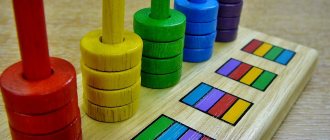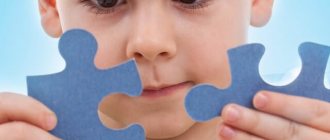What is thinking?
There are many definitions of this concept, but, in essence, they all boil down to one thing: thinking is the process of cognition through generalizations, an indirect reflection of reality. That is, this is knowledge that we receive not from the senses, but through the thought process.
A simple example can be given: we look at a boiling kettle and know for sure that the water in it is very hot. We do not need to measure its temperature using special instruments, we do not need to test the water with our hands. We remember what boiling water looks like, and, having generalized our knowledge and extended it to a specific kettle of water, we draw a conclusion. This is how the thinking process works.
Let's look at the basic mental operations that help the cognitive process.
- Analysis is the mental operation of decomposing the object being studied into its component parts, properties or characteristics. Analysis helps to highlight certain properties of an object that we need in a particular case. There can be as many of them as you like. For example, how can you describe an apple? It is round, red, edible.
- Synthesis is an operation opposite to analysis, when objects or phenomena are combined into groups based on common features. In our example: something red, round and edible - what could it be? Apple? Yes, but not only - obviously, the description would include a tomato, a plum, and a candy of the appropriate shape.
- Generalization is the combination of various objects or phenomena into one group based on a common feature. For example: several items of different shapes - an apple, a banana and a pear - can be combined into the “Edible” group. And the apple, red bow and fire truck are in the “Red Objects” group.
- Comparison . Everything is simple here: objects or phenomena that have a common characteristic are compared with each other. The apple is as red as a fire truck, but much smaller. The common feature is color, the difference is size.
- Concretization . Based on general characteristics, specific objects can be identified. In our case: red objects - an apple, a fire truck, a bow. Edible products: banana, apple, pear, tomato.
- Analogy . Transferring knowledge about one subject/phenomenon to another (less studied or inaccessible for study). Knowing the characteristics of one apple, we can draw conclusions about all the apples in the basket.
Thinking operations also include:
- Abstraction is when, while studying a subject, it is necessary to concentrate on one of its properties, ignoring the rest. For example, a ball and an orange are round objects, and that’s where their similarities end. But if we need to name exactly objects that have the shape of a ball, we can abstract from the remaining properties of an orange and a ball.
- Classification is the distribution of objects according to some characteristics. For example, we can categorize objects by shape (round or not); color (red and not), the sign “edible or inedible”. Mental classification helps organize knowledge about a subject.
- Systematization - arrangement of objects in a certain order. For example, all red objects can be arranged according to size: fire truck - apple - bow.
The process of learning, acquiring any new knowledge, as a rule, includes a person simultaneously performing several such mental operations.
Characteristics of thinking ↑
Thinking is one of the basic psychological processes. Its formation has been well studied. It has been proven that it is closely related to speech. And it is characterized by the following features:
- search and discovery of new knowledge;
- a generalized reflection of the information received and the surrounding reality;
- analysis of events or objects;
- perception of objects.
As the child grows and socializes, the nervous system and thinking improve. For their development, they will need the help of adults who surround the baby. Therefore, as early as one year of age, you can begin classes aimed at developing children’s cognitive activity.
Important! It is necessary to consider what objects and how the child is ready to work. Educational materials and assignments are selected taking into account the individual characteristics of children.
The thinking characteristics of this age group are determined by the following:
- generalization – the child is able to compare and draw conclusions about similar objects;
- visibility – the child needs to see facts, observe various situations in order to form his own idea;
- abstraction – the ability to separate signs and properties from the objects to which they belong;
- concept - an idea or knowledge about a subject related to a specific term or word.
Systematic mastery of concepts occurs already at school. But groups of concepts are laid down earlier. Along with the development of abstraction, children gradually master inner speech.
Peculiarities of thinking of preschoolers
Psychologists distinguish three types of thinking characteristic of preschool children:
1. Visually effective . Involves studying a subject through direct interaction with it. It develops in a child very first, by the age of 2-3 years. Thinking at this age is based on the principle: “action - observing the results - trying to understand what is happening.” The baby is not yet thinking and practically does not refer to previous experience.
2. Visual-figurative . Appears from 3-6 years of age. Here, previously acquired experience plays an important role. At this age, a child does not have to perform certain actions if he knows their result. He can imagine a familiar object (its image) and even perform certain mental actions with it with the help of memories and imagination.
For example, a 2-year-old child needs both a doll and a spoon to “feed” a doll, and at 5 years old a child calmly operates with an invisible spoon, conducting an active dialogue with the doll, which also sometimes exists only in his imagination.
3. Verbal-logical . Typical for children of older preschool age. This is the most developed stage of thinking. Here, not only actions and images are involved in the process of cognition - the child uses mental operations and reasoning. At this stage of thinking, speech is actively used.
Of course, even at this age, visual material is of great importance, but the child is already able to analyze the situation, predict its development based on previous experience, generalize, and draw conclusions. They say that at the age of 5-7 years, a child’s “logic turns on.”
“Logic” literally translated from Greek means “the science of correct thinking” or “the ability to reason.” That is, in order to develop logical thinking in a preschooler, you need to teach him to think and reason correctly.
It must be remembered that a child’s logical thinking must be based on a certain level of knowledge. Therefore, it is important not only to develop the child’s thinking apparatus, but also to provide him with information about the world around him.
Features of the development of thinking in a preschool child
Development of thinking in preschool children. During the preschool period, different types of thinking arise, and one becomes the basis for the emergence of another. The peculiarities of thinking depend on the acquired experience and knowledge that the child acquires on the path of growing up.
Thus, the prerequisites for thinking and understanding are laid from the very first months of life. The first rattle in a child’s life, the first actions with objects surrounding the baby - everything matters in establishing connections between a person and an object. Random actions can generate interest and attempts to repeat these actions again. For example, after hearing a rattle make sounds, your baby will shake it again to repeat the process.
In a small child, thinking cannot be conscious; it simply occurs as a consequence of the perception of reality. And only when the child begins to walk, gains motor activity, and thinking also actively develops. This stage begins when the child turns two years old. Moreover, initially thinking becomes a consequence of practical action. Without conscious brain function. Intelligence begins to develop when a child gets the opportunity to create something through games and educational, cognitive activities. As the child gains more and more knowledge, he learns to perform mental operations, and by the age of five he can analyze, compare, and generalize.
Forms of logical thinking
There are three forms of logical thinking: concept, judgment and inference.
A concept is a generalized characteristic of a phenomenon or object, or rather, a group of objects or phenomena that are similar in some way.
For example, “snow is a type of precipitation of crystalline form.” In this case, the concept of “snow” identifies precisely this type of precipitation based on the attribute “crystalline form”.
Judgment is a reflection of connections between objects or phenomena. It is not necessarily true - it can be false, and private, and individual.
An example of a true and general proposition in our case could be the expression “snow always falls at low temperatures,” a particular one — “there are snowless winters,” and a singular one — “there was no snow this winter.”
Inference is the establishment of such connections between concepts (or judgments) in which a new one is obtained from one or more initial judgments - a conclusion.
Obviously, it is the ability to draw conclusions (conclusions) from the information available to a person that speaks of his ability to think logically.
On the topic: methodological developments, presentations and notes
Gender differences in the thinking characteristics of preschool children
In connection with the changes taking place in the preschool education system, the most pressing issue has become the gender approach to the education of preschool children...
Features of the development of logical thinking of preschool children with the help of logical and mathematical games
It is most advisable to develop the logical thinking of an older preschooler in line with mathematical development.
The development of logical thinking through didactic logical-mathematical games is important... Features of the development of thinking in preschool children.
Are we brothers in mind? There is still an opinion in families that a child is a small, imperfect adult who knows less and understands life less well, that the differences between a child and an adult are purely quantitative...
Features of the thinking of preschool children
Features of the thinking of preschool children...
Seminar for teachers “Features of the development of logical thinking in preschool children”
Development of logical thinking, functions of logical games. Practical advice for teachers….
Report on creating conditions for the formation of imagination and imaginative thinking in preschool children through artistic and aesthetic activities.
Report on creating conditions for the development of imaginative thinking and imagination of preschool children.....
Features and stages of development of thinking of preschool children
Thinking is a cognitive process of a higher level compared to the direct sensory reflection of reality in sensations, perceptions, ideas. Sensory knowledge gives only...
- I like
Sources used:
- https://alldoshkol.ru/process/razvitie-myshleniya-u-doshkolnikov
- https://marypop.ru/doshkolnik/razvivayushhie-zanyatiya/razvitie-myshlenija.html
- https://nsportal.ru/detskii-sad/vospitatelnaya-rabota/2017/07/04/osobennosti-vidy-i-svoystva-myshleniya-detey
Development of logical thinking in preschoolers
A 5-7 year old child is already able to use mental operations: analyze objects and phenomena, highlight their characteristic features, establish cause-and-effect relationships, and draw conclusions. That is, logical thinking is quite accessible to children of older preschool age.
At the same time, child psychologists warn parents against trying to quickly “transfer” a child from the stage of imaginative thinking to the more developed stage of logical thinking. It is not worth preventing a child from “thinking in pictures”, if only because such a skill develops creativity in children, and therefore facilitates the search for solutions to non-standard problems. The lack of developed imagination can result in a child’s inability for abstract thinking, which develops later, by the age of 10.
The main role of parents is to provide children with the most effective learning process. Children under 3 years old, who “think with their hands,” should be given as many opportunities as possible to tactilely explore objects and their transformations. The child must assemble a tower of cubes, make a cake out of sand, bathe a duck in water, and so on. Material for research may be limited only for safety reasons.
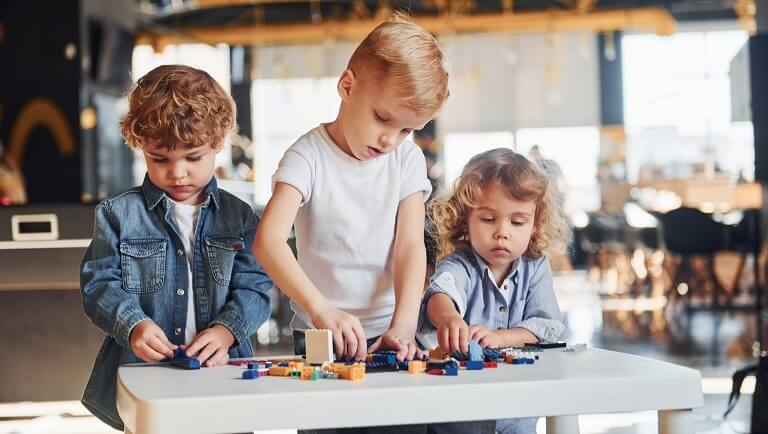
To develop imaginative thinking, it is necessary that the child be able to draw or sculpt objects from plasticine from memory, observe nature, coherently describe pictures, and be able to talk about what result he wants to achieve by assembling a construction set.
You should not expect that, having reached a certain age, a child will immediately jump from one type of thinking to another. He is developing the ability to move to a new level, and he can only realize it with the help of an adult. At the first stage, the participation of an adult in children's activities is necessary. At the same time, he not only does the same thing as the child, but also involves him in the discussion: “What do you think, if you put this detail here, what will happen?” (assembling a construction set), “I forgot what a fly agaric looks like” (drawing a forest).
At a later age, the child needs to be involved in the search for cause-and-effect relationships between phenomena and objects. For example, do not immediately answer his questions, but reason with him or ask him to offer his options. The main thing in this case is not the correct answer, but the search for a solution.
At the age of 5-6 years, children can be offered simple logic problems for preschoolers. The main thing is not to overload your baby: at this age, 10-15 minutes of exercise a day will be enough. And to maintain your child’s interest, try to choose tasks with a fascinating plot and colorful illustrations.
Preview:
Features, types and properties of thinking in preschool children.
Thinking is the reflection of connections and relationships between objects and phenomena of reality, leading to the acquisition of new knowledge.
With the help of thinking, a person learns about the world around him in all its diversity, properties and relationships.
The first feature of thinking is its indirect nature. What a person cannot know directly, he knows indirectly, indirectly: some properties through others, the unknown through the known. Thinking is always based on the data of sensory experience - sensations, perceptions, ideas, and previously acquired theoretical knowledge. indirect knowledge is mediated knowledge.
The second feature of thinking is its generality. Generalization as knowledge of the general and essential in the objects of reality is possible because all the properties of these objects are connected with each other. The general exists and manifests itself only in the individual, the concrete.
Currently, in Russian psychology, three main stages of the development of children's thinking are quite clearly characterized:
1.visual-effective (cognition through the manipulation of objects),
2.visual-figurative (cognition through representations of objects, phenomena),
3.verbal-logical (cognition with the help of concepts, words, reasoning). For the development of thinking in a child, targeted training and education by adults plays a decisive role.
Visual-effective thinking develops intensively in a child from 3 to 4 years of age: he comprehends the properties of objects, learns to operate objects, establish relationships between them. Features of objective-effective thinking are manifested in the fact that problems are solved with the help of a real, physical transformation of the situation, with the help direct contact with objects. This form of thinking is typical for children under 3 years of age. A child of this age compares objects, placing one on top of another or placing one next to another. That is, the child’s thought is directly related to his actions, while the action itself is ahead of thinking.
Subject-based thinking is also found in adults. For example, when thinking about an upcoming renovation, we use this type of thinking. Subject-specific thinking is necessary when it is not possible to fully foresee the results of any actions
Based on visual-effective thinking, a more complex form of thinking is formed - visual-figurative. It is characterized by the fact that the child can already solve problems based on ideas, without the use of practical actions. This type of thinking is spoken of when a person, while solving a problem, analyzes, compares, generalizes various images, ideas about phenomena and objects. A visual-figurative solution most fully recreates the whole variety of different characteristics of an object, while the vision of an object can be simultaneously recorded from several points of view.
Thus, visual-figurative thinking is practically inseparable from imagination. Visual-figurative thinking plays an important role in developing children’s understanding of the processes of change and development of objects and phenomena.
By the age of 6–7 years, a more intensive formation of verbal and logical thinking begins, which is associated with the use and transformation of concepts. However, the leading one at this age is visual-figurative thinking. Verbal-logical thinking operates on the basis of linguistic means and represents the highest stage of development of thinking. Thanks to verbal-logical thinking, a person can establish the most general patterns, foresee the development of certain processes in nature and society, and generalize various visual materials.
Verbal-logical thinking is the highest type of human thinking, dealing with concepts about objects and phenomena, and not with the objects, phenomena or their images themselves. This type occurs entirely in the internal, mental plane.
The development of visually effective and visually figurative thinking is carried out in close connection with the formation of logical thinking. It is necessary to pay special attention to the development of the strengths of complex thinking, which is leading throughout a significant period of preschool childhood and is extremely important in the overall mental development of children. The correctness of solving a practical or cognitive problem that requires the participation of thinking depends on whether the child can identify and connect those aspects of the situation, the properties of objects and phenomena that are important and essential for its solution.
In fact, all types of thinking are closely interrelated. In practice, it can be difficult to determine what type of thinking is used by a person when solving a particular problem, since all types of thinking are intertwined with each other. We can only talk about the relative predominance of one or another type of thinking.
In practice, thinking as a separate mental process does not exist; it is invisibly present in all other cognitive processes: perception, attention, imagination, memory, speech. The highest forms of these processes are necessarily associated with thinking, and the degree of its participation in these cognitive processes determines their level of development.
The task of thinking is to reveal relationships between objects, identify connections and separate them from random coincidences.
Leontyev A.N. defines thinking as “the process of reflecting objective reality, constituting the highest level of human cognition.” According to Leontyev A.N., thinking provides knowledge about the essential properties, connections and relationships of objective reality, and carries out the transition “from phenomenon to essence” in the process of cognition.
One of the most famous theories of the formation and development of human thinking is the theory developed by J. Piaget. He came to the conclusion that in its development, children's thinking goes through the following four stages:
1. Stage of sensorimotor intelligence. It covers the period of life from birth to 2 years. At this stage, visual and effective thinking is presented in the most elementary forms. Thanks to this thinking, the child gets the opportunity to understand the world around him in its invariants, stable properties.
2. Stage of pre-operational thinking. At this stage there are children from 2 to 6 - 7 years old. At this time, children develop speech and the process of connecting it with thinking begins. Here there is an internalization of external actions with objects, that is, the transformation of any process or phenomenon from external, in relation to a person, into internal. For example, a joint activity shared between several people into an internal, psychological process. However, the child is not yet able to perform operations.
3. Stage of specific operations. At this stage there are children aged 7-8 years to 11-12 years. They can perform operations with specific objects, and the actions included in such operations become reversible. However, children of this age are not yet able to perform operations with abstract concepts.
4. Stage of formal operations. It includes children aged 11-12 years to 14-15 years. These children are able to perform full-fledged mental, reversible operations with concepts, acting according to the laws of logic. The mental operations of children at this stage represent a structurally organized, internally consistent system.
L. S. Vygotsky studied the process of concept development in children in approximately the same age range with which J. Piaget dealt.
L. S. Vygotsky identified the following four stages of concept formation in children:
1. Stage of syncretic thinking. Children at this stage cannot cope with the task of forming concepts, and instead of searching for essential signs of a concept, they select objects on a random basis (a syncret is a random, unordered set of objects).
2. Stage of complex thinking. Objects at this stage are combined by children into groups based on common objective features. However, these signs are random and insignificant for the items being compared. In addition, the features identified by children can vary randomly in the same experiment: first, the child selects objects based on one feature, then on another, etc.
3.Pseudo-concept stage. At this stage, children seem to act correctly, selecting objects according to their essential characteristics. It seems that they understand what the corresponding concept means. However, these definitions do not highlight the essential features of the relevant items.
4. Stage of real concepts. At this stage, children not only act correctly, but also give correct verbal definitions of concepts, highlighting in them the most general and essential features of the corresponding objects.
P. Ya. Galperin proposed another theory of the development of thinking, which he called the theory of planned (stage-by-stage) development of mental actions. This theory represents and scientifically substantiates the process of gradual transformation of external, practical actions with material objects into internal, mental actions with concepts. This process naturally goes through the following stages:
1. The stage of forming an indicative basis for action. At this stage, the person who must form a new mental action becomes familiar with the action, its composition and the requirements for it, that is, he orients himself in it.
2. The stage of performing an action in an external, expanded form, with real material objects. At this stage, the corresponding action is practically performed in its entirety on real, material objects and is carefully practiced.
3. The stage of performing actions in terms of loud speech. Here the action worked out at the previous stage is spoken out loud from beginning to end, but is practically not performed.
4. The stage of performing the action in terms of speaking “to oneself”. At this stage, the action is spoken by the person to himself, that is, with the help of so-called silent speech. A person’s vocal cords are working, but people around him cannot hear him.
5. The stage of performing an action in terms of inner speech. This is the final stage of the formation of a mental action, at which it becomes completely internal, is associated with inner speech, is performed quickly and automatically, so that it seems that the person instantly, without hesitation, gives an answer to the question posed.
According to S.L. Rubinstein, as the main subject of psychological research, thinking acts as a process, as an activity.
M.N. Poddyakov systematically studied the development of visual-effective and visual-figurative thinking. The development of children's thinking is analyzed from the point of view of complication and improvement of means and methods of cognitive activity.
Bibliography
1. Leontyev A.N. Activity. Consciousness. Personality. - M., 1982.
2. Personality psychology in the works of foreign psychologists / Comp. and general editing by A.A. Reana. - St. Petersburg: Peter, 2000. - 320 pp.: ill. — (Series “Anthology on Psychology”). (Z. Freud, A. Adler, K.G. Jung, E. Fromm, E. Erikson, K. Horney, E. Tondike, J.B. Watson, A. Bandura, R. Walters, A. Maslow, K Rogers, W. Frankl, G.W. Allport, G.Y. Eysenck, K. Leonhard).
3. Personality psychology in the works of domestic psychologists / Comp. and general editing by L.V. Kulikova. - St. Petersburg: Peter, 2001. - 480 p. — (Series “Anthology on Psychology”). (Lazursky A.F., Teplov B.M., Myasishchev V.N., Ananyev B.G., Zeigarnik B.V., Rusalov V.M., Petrovsky A.V., Uznadze D.N., Dodonov B.I., Platonov K.K., Bratus B.S., etc.).
4. Reader on psychology. Textbook manual for pedagogical students. Inst. Ed. prof. A.V. Petrovsky. Comp. and ed. introduction.essays V.V. Mironenko. - M.: “Enlightenment”, 1977 (and 1987, 2nd ed.). — 528 p. (sections of general, developmental and educational psychology).
5. Bozhovich L.I. Personality and its formation in childhood. M., 1968.
6. Vallon A. Mental development of a child. M., 1967.
7. M Psychology of preschool children. Development of cognitive processes. — Ed. A.V. Zaporozhets, D.B. Elkonina. M., 1964.
8. Poddyakov N.N. Preschooler thinking. - M., 1977.
9. Vygotsky L.S. Thinking and speech. Collection cit.: In 6 volumes - M.: Pedagogy, 1982, T. 2. P. 6-361.
10. Obukhova L.F. Stages of development of children's thinking. (Formation of elements of scientific thinking in a child). M., 1972.
11. Klyueva N.V. We teach children to communicate. Ya., 1996.
12. Lisina M.I. Selected works. Communication problems. M., Pedagogy. 1986.
13. Mikhailenko N.Ya. Pedagogical principles of organizing a story game. // Doshk. playback – 1989. – No. 4.
14. Savova M.R. What are the rules of the game in communication. // Elementary School. 2004, no. 2.
15. Sakhin F.A. Basics of speech development in preschoolers. M., 2002.
16. Elkonin D.B. Child psychology. M., 1960.
Games and exercises to develop logical thinking in preschoolers
Children's games to develop logic will be useful at any age. Here are some examples of such games and exercises.
"The Game in Reverse"
An adult says a phrase that contains a deliberately incorrect message. The child must quickly correct it. Depending on age, you can complicate the original phrases. For example, the little ones understand that the phrase “The snow is hot” should be immediately answered: “Cold”; “Tomato blue” - “Red”. And older children can already compare and answer the phrase “An elephant is smaller than a mosquito”: “More.”
The good thing about this game is that it can be played by an unlimited number of children. In addition, kids are always very cheerful and readily “correct” adults.
"Extra item"
The Find the Odd One game is also a fun activity suitable for all ages.
Pictures or objects are collected in one place (box, hat) according to some principle, and one extra object is thrown there. It needs to be identified and named.
Tasks can be very simple or more complex. For example, for kids you can throw a ball into a box of fruit, and for older children you can put a vegetable in the same fruit.
In this case, in a playful way, the child learns to analyze objects, identify common and different features, and acquire classification skills.
“What does it look like?”
Play association games with your child. Let him say what this or that object reminds him of. You can start with the simplest (an orange is a ball, a potato is a pebble) and gradually move on to more complex associations: what does a rainy sky, a fluffy kitten, a mitten, a table look like?.. The more surprising the association, the better.
Don’t try to tell your child a trivial answer: even if you don’t think that ice cream looks like a balloon, it’s okay, it’s important that the child develops his own images.
This game is more suitable for average preschoolers.
"What does it mean?"
A lightweight version of a full-fledged logic game.
Invite your child to continue the phrase in as many ways as possible: “I took candy from the table. What does it mean?" Options, for example, could be: “There is no more candy on the table”, “The candy is now in my hand (pocket)”, “There are fewer candies on the table”, “I have stained my hand with chocolate”...
The more options are born, the more amazing they are. This game is not for the youngest, but at 4-5 years old children already play it with pleasure.
“Complete the drawing”
The simplest creative task. You can draw any figure (squiggle) on the sheet and invite the child to complete the drawing, so that this figure is definitely involved. For younger children, you can depict something quite recognizable, but not completed, and for older children, do not limit your imagination.
"Find a Pair"
Make pairs of pictures that are logically related to each other. Divide into two piles. Let the child find a pair for each item.
For younger children, you can choose simple options: tree - leaf, fish - aquarium. Older children can cope with a more complex task - for example, “picking up” a syringe for the doctor.
"Item Description"
You name the object, and the child must choose as many epithets for it as possible. For example, a Christmas tree: prickly, tall, beautiful, elegant, green.
The reverse option is also interesting. What could be prickly? The same tree, hedgehog, needle, snow, scarf... The more associations, the better.
The game, of course, is not for the little ones.
"Find the sequence"
For children who can count to at least 10, you can create an elementary number sequence, where each subsequent number is greater/less than the previous one (by a certain number).
2 - 4 - 6 - ...What's next?
9 - 7 - 5 - ...What's next?
Older preschoolers will enjoy pattern-finding games not only with numbers, but also with pictures.
"The Most Necessary Items"
Invite your child to go to the countryside / desert island / on a trip around the world, taking with him only things, for example, with the letter “k” or green, and no more than 10 pieces. Let him explain why he needs this or that thing.
Besides being fun, it's also a good way to test your child's ability to predict future events.
There are many types of developmental activities. Which one to choose depends only on the imagination of adults and the inclinations of children. Some children perceive information better in verbal form, others - through illustrations. The main thing is that the child is interested, so that he gets involved in the process of finding a solution, and begins to think: “Why is this so?” and “What if?”

Logic and mathematics for children
We develop logical thinking, teach you how to work with information and make the right decisions in an interactive game format.
Learn more.
Exercises to develop analysis, synthesis and classification skills
“What’s extra?”
Place in front of your child several pictures depicting objects that he understands. You can use children's lotto cards, or you can make pictures yourself.
For example, the pictures show the following objects: an apple, candy and a book. The child must analyze and correctly classify these objects. An apple and a candy can be eaten, but a book cannot. This means that the picture with the book in this row will be superfluous.
“Pig in a poke” (we train analysis and synthesis skills)
One of the players (if the child is still small and does not speak very well, let it be an adult) takes a picture from the children's lotto and describes what is depicted on it, without showing it to the other player. However, the object itself cannot be named! The other player must guess, based on the description, what is shown in the picture. Over time, when the child grows up (starting from 4-5 years), you can change roles - let the child describe what is shown in the picture, and the adult player guesses. In this case, not only thinking abilities are trained, but also coherent speech skills.
“Pick a pair” (training analysis, comparison)
You need two sets of children's lotto with the same cards. One child (player) takes a card and, without showing it, explains to the other players what is written on it. Other players, analyzing, offer their own version of the card, which, in their opinion, depicts what the first child described. If the description and the answer match, two identical cards are removed from the game, and the game continues further with the remaining cards.
"What is this?" (analysis, comparison, generalization)
Invite your child to characterize the following vocabulary lines using a generalizing word.
- glass, plate, fork, knife; /dishes/;
- plum, apple, orange, banana; /fruits/;
- sparrow, stork, goose, dove; /birds/;
- cat, pig, rabbit, sheep; /animals, pets/;
- rose, tulip, lily of the valley, poppy; /flowers/.
Come up with vocabulary lines on your own, complicate the tasks over time, move from simple objects to concepts and phenomena (seasons, human feelings, natural phenomena, etc.).
The development of thinking in preschool children is a task, the solution of which directly depends on how successfully the child has mastered and can use the above mental operations.
Activities and games aimed at training them will ensure not only the intellectual development of the preschooler, but the harmonious formation of the personality of the growing child as a whole, because it is developed thinking that distinguishes a person from other living beings.
Useful video about the development of creative thinking in children:
Published 07/04/2017 — 16:13 —
Thinking is present in all cognitive processes: in perception, imagination, attention, speech, memory. With the help of thinking, preschoolers learn about the world around them in all its diversity, properties and relationships.
Types of thinking
Visual - effective
This type of thinking corresponds to the early period of a child’s life (from 1.5 to 2 years). This age stage is characterized by exploring the world around us with the help of our hands. The child disassembles, studies, and sometimes breaks toys in the process of exploration. This is how ideas about the world around are formed.
If the child’s active actions are aimed at studying the objects around him, we can talk about a visually effective way of thinking.
We must not forget that in the process of studying, a child is capable of breaking, damaging and even injuring himself. Parents need to encourage the desire to learn new things, but safety precautions must be taken.
Visually – figuratively
The next stage begins at 3-4 years and continues until 7 years. This does not mean that the previous one disappears completely. In addition to the existing skills of exploring the surrounding reality, the preschooler thinks using images. During this age period, an active ability to draw is manifested. All available materials are used: from pebbles on the street to mother’s lipsticks on new wallpaper.
When drawing an object, the young researcher imagines the image, its essential features that remain in memory, and tries to convey the characteristic features
At this stage, it is important to embody in reality the images that appear in his mind.
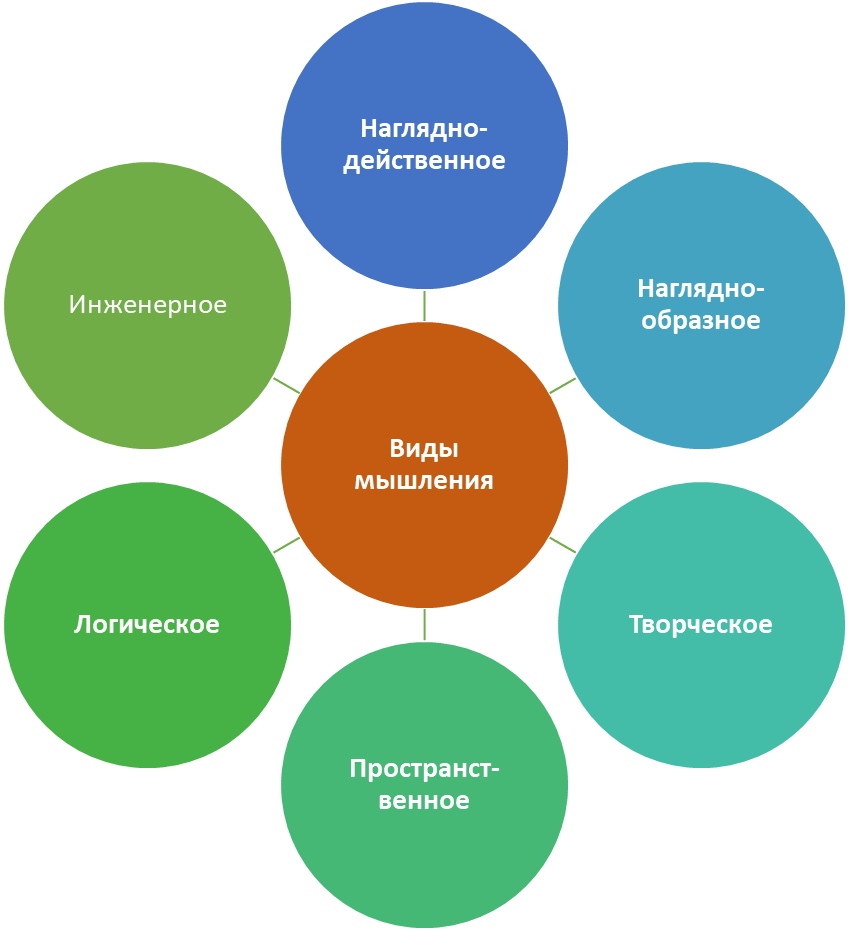
Creative
Determines the ability to be creative – to create creative, non-standard solutions. A preschooler is not able to develop his creative abilities on his own, so the emergence of creativity in him largely depends on the wishes of his parents.
An important condition for the emergence of creativity are such forms of mental activity as fantasy and imagination, which are characteristic of any child. It is necessary to create an environment in which the little man will feel comfortable developing his creative impulses. The types of creativity are varied: visual, musical, arts and crafts, choreographic. literary.
Spatial
This type is the basis for further educational and, subsequently, work activity. Developing spatial thinking is necessary for correct orientation in space, the appearance of images in the mind, and the ability to use them in solving problems.
Young researchers need to be helped to correctly perceive the shapes, sizes of objects, their location relative to each other, and their movement in space.
Boolean
Just like spatial thinking, it is the foundation for further full intellectual development.
Engineering
This type of thinking introduces children to science, increases interest in the work of scientists and researchers, broadens their horizons through experimental activities, design, and creates the prerequisites for technical creativity.
Modern children receive most information from television screens, and not through their hands. Experiences and experiments teach you to think outside the box and find answers to complex questions.
